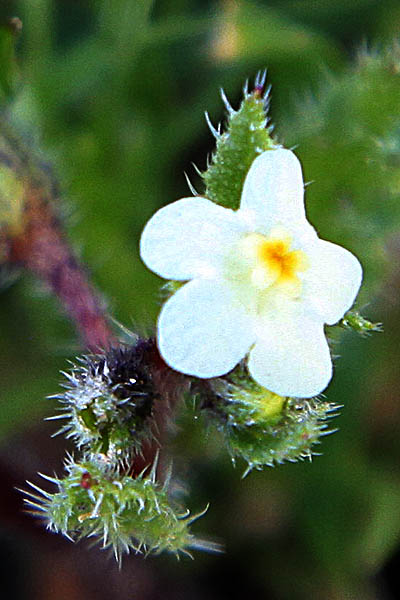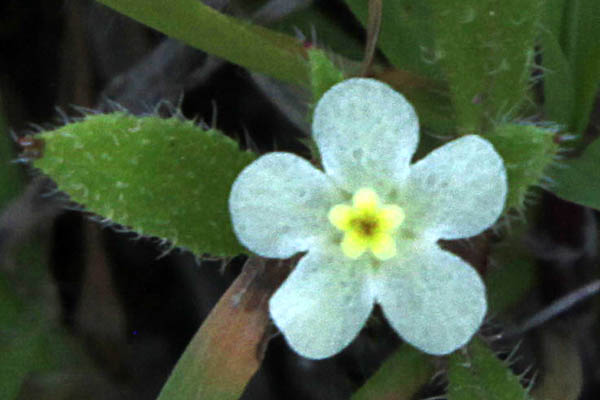Alkanet, Bugloss, Oxtongue,
Hebrew: לשון-הפר המדברית, Arabic: لسان الثور الميلري
| Scientific name: | Anchusa milleri Lam. ex Spreng. | |
| Synonym name: | Anchusa ryssosperma Steud. ex A.Rich | |
| Common name: | Alkanet, Bugloss, Oxtongue | |
| Hebrew name: | לשון-פר מדברית, לשון-הפר המדברית | |
| Arabic name: | لسان الثور الميلري | |
| Family: | Boraginaceae, Forget-me-not family, זיפניים |

|
| Life form: | Annual | |
| Stems: | 10-50 cm high; stems simple or branched, procumbent | |
| Leaves: | Alternate, entire, oblanceolate to oblong, covered with short hairs and long bristles, margin smooth; apex obtuse to acute; base attenuate; upper leaves sessile | |
| Inflorescence: | Leafy, raceme-like, and lax in fruit; hermaphrodite | |
| Flowers: | bracteate, and pedicellate. Bracts, foliose, sessile; pedicel 3-8 mm, elongate in fruit; calyx 5-7 mm, divided almost to base; lobes, linear, and not accrescent in fruit; corolla 1-1.3 cm, white or pinkish; tube 7-9 mm, straight; scales, 0.5 mm, inserted at the corolla-throat, exserted, oblong, velutinous, the tips curved outwards; limb 4-5 mm broad, slightly zygomorphic; lobes 1.5-2 mm, broadly obovate; stamens inserted at the middle of the tube, in 2 series of 2 and 3; anthers 1 mm, oblong- elliptic, obtuse; ovary glabrous; style 2-2.5 mm, slender, glabrous; stigma 2-lobed | |
| Fruits / pods: | 4 Nutlets, 3.5-4 x 2-2.5mm, erect or slightly oblique; inner face is flat, outer face is convex, and reticulate-ribbed; ribs, smooth, yellowish-brown, glabrous | |
| Flowering Period: | March, April | |
| Habitat: | Shrub-steppes, Desert | |
| Distribution: | Mediterranean Woodlands and Shrublands, Semi-steppe shrublands, Shrub-steppes, Deserts and extreme deserts | |
| Chorotype: | Irano-Turanian - Saharo-Arabian | |
| Summer shedding: | Ephemeral |

Derivation of the botanical name: Anchusa, αγχουσα, a plant used for cosmetic as a rouge, perhaps Anchusa tinctoria. milleri, named for Gerrit Smith Miller, Jr. (1869 - 1956), an American zoologist and botanist. ryssosperma, rysso ???, sperma, "a seed". The Hebrew name: לשון-פר, lashon-par, 'ox-tongue', the leaves have raised spots with short, hooked bristles, giving the leaves a very rough feeling (like an ox’s tongue, hence the name).
|